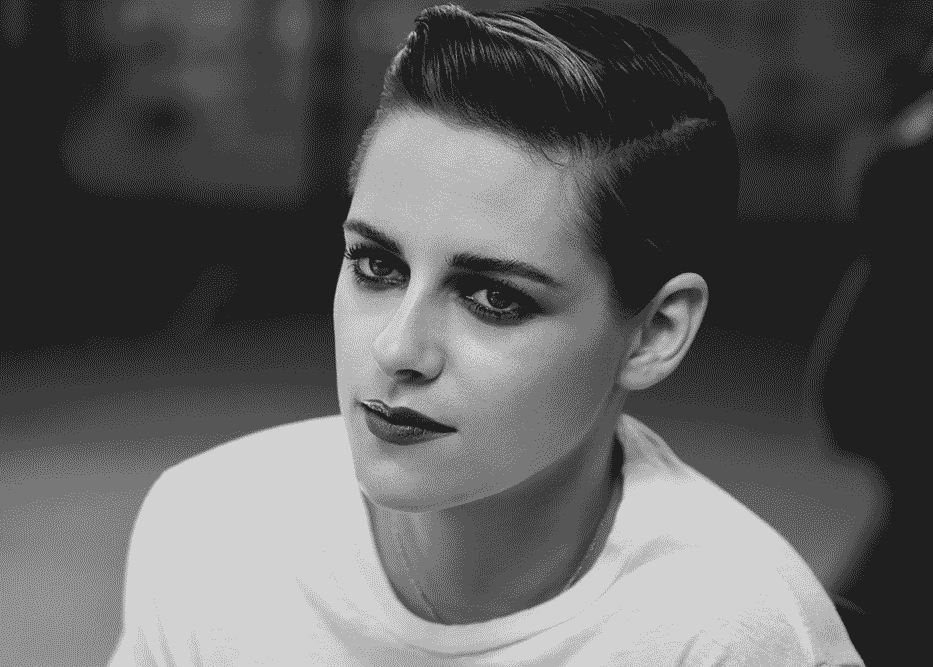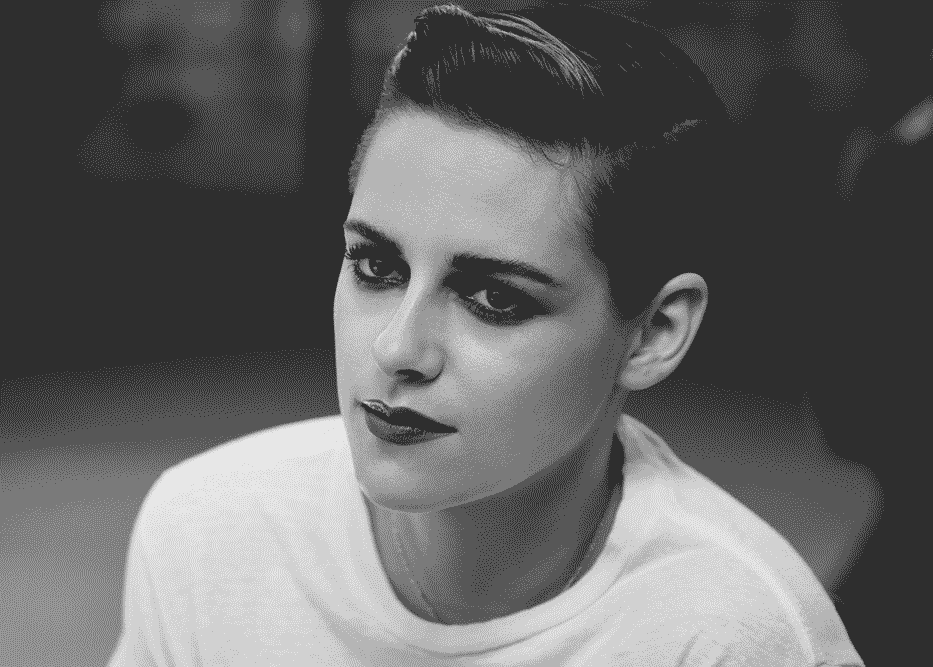Why Kristen Stewart is best at playing herself

Public consensus was that Stewart could not act. But she’s just being herself, and that’s what makes her riveting onscreen.
Culture
Words: Philippa Snow
Louise Brooks, the sensuous, modern-seeming silent era actress, is by now so indelible in the history of cinema that it feels strange to think of her as being controversial. Still: critics are fallible, and the next big thing can feel too next and too big on first exposure. Brooks, with her black helmet bob, her out-of-time persona, her sardonic eyes and smirking mouth, was unlike anything immediately familiar to the audiences of the 1920s. Where her contemporaries and immediate predecessors favoured melodrama, she gave the impression of being disinterested in drama, period; in 1929’s Pandora’s Box, she plays a blasé nymphomaniac who has a lesbian affair, appearing not only to accept her debasement but to get off on it. Foxy, casual, she convinces as a fatalistic slut. Straighter actresses like Mary Pickford or Lillian Gish, with their expansive gestures and sweet airs, might sooner have been subject to death by a sexual maniac for real than to be caught behaving naturalistically in one of Brooks’ slinky, kinky roles.
“Louise Brooks,” one critic grumbled in a review of Pandora’s Box, “cannot act. She does not suffer… she does nothing.” Always, she appeared to be a hair’s breadth from intentionally breaking down the fourth wall; always, she was sexual in a manner that swung between mischievous and dangerous, simultaneously explicit and unknowable. (“Careless, but overwhelming,” said the writer David Denby a few years ago, perfectly pegging her unusual alembic of chill nonchalance and burning super-presence). A brilliant writer of film criticism as well as an actress, Brooks did not think of the things she did onscreen as passive, but as active in a way that transcended the purely physical. “Acting,” she once wrote, “does not consist of descriptive movement of face and body, but in the movements of thought and soul transmitted in a kind of intense isolation.”
Which brings us, somewhat neatly, to the actress Kristen Stewart. Vilified for her decision to sign on for a trilogy of YA vampire films before she had turned old enough to vote, then further vilified for her apparent unwillingness to appear delighted with the opportunity, the public consensus was that Stewart could not act – that she did nothing on film other than look furious and hot. If Brooks was disliked for not suffering enough, Stewart was seen to suffer too openly as a direct result of her extreme famousness, and if Brooks shocked her critics in the twenties and the thirties by appearing to do little else but show up onscreen, Stewart was said to look as though she wished she had not shown up on her movies’ sets at all.
“I can be nothing other than myself,” she told The Guardian in 2017. “I know actors who say: ‘Oh, this role had nothing to do with me, it’s just the character’. And I think: ‘Yeah, but it is your interpretation of the character.’ Because you can never get away from being you. That’s always going to be there. An interaction with a good director might bring you closer to aspects of yourself that might have been less apparent before. But it’s still about self. It’s still all about me.”
Being herself had become easier by far a few weeks earlier after she came out live on an episode of Saturday Night Live. “I’m, like, so gay, dude,” she smirked gleefully during her opening monologue, her cropped hair and leather-babe look signalling much the same thing. (Louise Brooks, who reportedly fucked Greta Garbo and described her as a “charming, tender” lover, if “a little masculine,” evidently shared Stewart’s energy in other ways, too. “When I’m dead,” she mused, “I believe that film writers will fasten on the story that I am a lesbian… I have done lots to make it believable.”)

Newly unburdened and newly contextualised by her disclosure, she began to reveal more of herself through her public image, her attire, and her work. Shaven-headed, clad in cowboy leather or a backwards baseball cap, chewing a toothpick, gazing at Cate Blanchett with what many fans interpreted as open lust: of course Stewart had never quite made sense as Twilight’s boring Mary-Sue, or as a Manic Pixie Dream Grump in Adventureland, or as the absurd lad-mag FHM’s Third Sexiest Woman of 2011, when all along she was meant to be this sexy, mouthy queer girl with the wardrobe of a Chanel-infused fuckboy, and the moody, dude‑y energy of James Dean.
Her transformation is never more thrilling or more readily apparent than across two films by writer and director Olivier Assayas, both of which feature Stewart as a gamine, grungy personal assistant: 2014’s Clouds of Sils Maria and 2016’s Personal Shopper. In the former, she has Bella Swan’s long hair and an apparent crush on Juliette Binoche’s character. (Almost too Stewart is the moment where she wolf-whistles Binoche, two fingers crammed into her mouth and an expression in her eyes that for some reason makes me think of Katherine Hepburn.) In Personal Shopper, she plays grief like a stringed instrument, her character Maureen defined by her slope-shouldered gait, her mournful eyes, the way her fingers tremble as if signalling some interior earthquake whenever she is afraid. She looks both masculine and feminine, anonymous and starry. The one sex scene is queer-coded by virtue of being a masturbation scene: she strips out of her boyish clothes, slips into her employer’s black organza gown, and fucks herself to the appropriately gender-bending soundtrack of Marlene Dietrich.
Both characters are, true to the actress’ word, variations on the theme of Kristen Stewart. Maureen, though, feels realest, most spectacular. The more Stewart brushes up against her queerness, or against what we perceive to be the masculine, the easier it is to see her pianissimo approach to acting as part of a legacy – a style descended from not only Louise Brooks, but Marlon Brando.
Think of the way A Streetcar Named Desire’s Blanche Dubois, as played with molto sound and fury by a straw-haired, draggily-comported Vivienne Leigh, rubs up against Brando’s volatile, naturalistic version of Stanley Kowalski like brocade against a cracking leather jacket. Or else, consider the critic Angela Bastien on the minor flourishes of one Keanu Reeves. “Actors like Keanu – who find beauty in stillness – are why film was created in the first place,” she writes in her essay The Grace of Keanu Reeves. “It’s a medium that can show us the truth of the human condition in a way no other form can. Keanu often taps into the truth of the shifting boundaries of modern masculinity, of how our bodies tell as much of a story as what we say.”
Switch “Keanu” for “Kristen” and switch “masculinity” for “femininity,” and the observation holds true. Both Reeves and Stewart have been more or less synonymous with wooden acting at some point in their careers. Both, too, are increasingly loved for their supposedly atypical qualities vis-à-vis gender: his evident sensitivity, her lack of fucks.
Richard Brody, reviewing Personal Shopper for The New Yorker, sees Brando in her, too – a sense that, as Mailer once said about the younger Brando, “whatever [she is] about to say on [her] own seems likely more interesting than whatever a screenwriter has written for [her].” – but startles by suggesting that “she could as easily have been replaced, in Personal Shopper, with another of the leading lights of her generation, such as Jennifer Lawrence or Tessa Thompson.”
While watching the film, he adds, “I found myself imagining their more overt emotionalism in lieu of the strained expressivity to which Assayas pushes Stewart.” Stewart, to my mind, does not appear to have been pushed to anything, and if her emotion is less overt, it is also in my experience closer to expressing the interior void of grief. She suffers, doing nothing. She does not act; she exists. The effect is only one of inscrutability if one is used to reading women as if they are open books, looking for easy cues when tiny, minutely expressive gestures – movements, Louise Brooks might say, of thought and soul – are capable of sending the same messages, albeit coded and at a considerably lower volume. Like Maureen, who sidelines as a medium, interested viewers must be capable of picking up minor, ethereal vibrations.
“You’re always who you’re supposed to be. There’s just an evolution there” – Kristen Stewart
This spring, as well as bleaching off her eyebrows, bewitching Paul Schrader, and appearing at the Met Gala dressed as another hot queer alien, David Bowie, Stewart has been on the promotional circuit for J.T. Leroy, a film about the famous literary hoax that saw a middle-aged cis woman writing as a gender-fluid teenage hustler with a penchant for disguise.
In life, the role of J.T. Leroy had been played by a petite blonde with they/them pronouns, Savannah Knoop. In J.T. Leroy, Savannah is played by a shaven-headed Kristen Stewart. “In terms of the process and the evolution of being a person and being a self, I can relate to… [not having] answers to very, very demanding questions,” Stewart told New York Magazine, considering her own relationship with gender. “You’re always who you’re supposed to be. There’s just an evolution there.”
Watching her play Savannah Knoop with her buzz cut and her fine, cut-glass features, her louche, soft delivery and effortless charisma, I thought of another recent, widely-written-about evolution: that of Robert Pattinson, her former partner, former Twilight co-star and current equal in brilliance, whose recent appearance in High Life as a death row astronaut has drawn some of the best notices of his 15-year career.
I thought about his buzz cut and fine, cut-glass features; his louche, soft delivery and effortless charisma. I thought about the small cottage industry of think pieces about the way he has excelled outside the Twilight movies, and how much of a surprise this revelation should be. Mostly, I thought about the way that Robert Pattinson and Kristen Stewart looked together in those movies; the way that it did not suit him to be sparkling and dandy, the male version of a Manic Pixie Dream Girl, and it did not suit her to be boring, heteronormative, and dressed like the most average girl on campus. I could never see them together, could never buy their coupledom. Funny how it seems more believable in 2019 when they look more like siblings – pretty brothers, even, or masculine sisters – than like a middle-aged Mormon’s idea of what sex ought to be.
A clip of Stewart at the TIFF premiere of J.T. Leroy shows her being asked whether she would consider rebooting, or else returning to, the Twilight franchise. Robert Pattinson, the interviewer adds with the misguided confidence of somebody who has not ever heard of sarcasm, is already on board. She lifts her finger from her mouth, a gesture as delicate and as meaningful as any she has made on film. “Yeah sure,” she deadpans, narrowing her sea-green eyes like a disdainful cat. “Absolutely, honestly, start sending scripts my way. Let’s start building this, let’s really explore.” Really exploring has been Kristen Stewart’s metier since roughly 2012, when she was finally allowed to give up being Bella Swan in favour of beginning the slow metamorphosis into being herself. She has no reason to go back – no reason to return to being someone else’s pale, uninteresting, heterosexual dreamgirl. When she says absolutely, honestly, what she means is: you’re fucking kidding, right?

